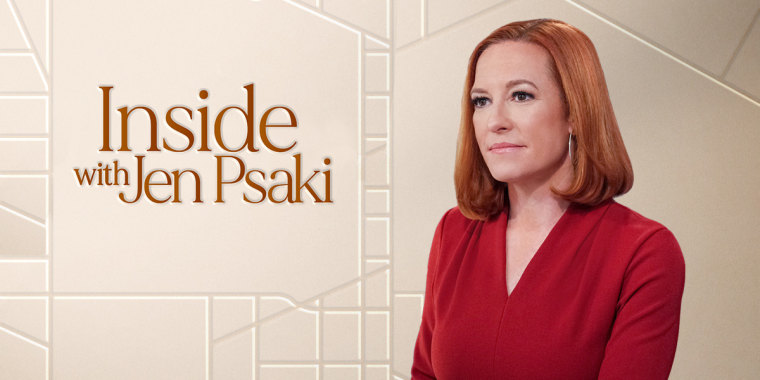Cruel intentions
In an interview with Time magazine published this week, former President Donald Trump put some meat on the bones of his most extreme proposals for a second term. When asked about his dictatorial aspirations, all he could say is: “I think a lot of people like it.”
But it hardly stopped there. Trump said he would treat migrants as enemy combatants, using the U.S. armed forces to detain and deport millions of undocumented immigrants, in violation of the law. Trump said states should be allowed to prosecute women for obtaining abortions, and also be allowed to monitor women’s pregnancies. And once again he vowed to personally interfere in the administration of justice, saying he could fire U.S. attorneys who don’t obey his orders.
While Trump has never hidden his authoritarian tendencies and dictatorial aspirations, this interview marked a shift toward a new, almost casual, openness about those intentions, however cruel or oppressive they may be.
It also was published amid a similarly disturbing trend from Trump’s allies, who are not only parroting his brand of rhetoric, but taking similar pride in cruelty and lawlessness.
Just take Arizona GOP Senate candidate Kari Lake, who last month encouraged MAGA vigilantism, asking supporters to “strap on a Glock” ahead of the November election. Or Arkansas Sen. Tom Cotton, who called to “forcibly remove” protesters from the Golden Gate Bridge. Or South Dakota Gov. Kristi Noem, who bragged about killing her 14-month-old puppy Cricket, simply because “it had to be done.”
Trump and his MAGA allies equate cruelty with power. Somehow that has become a core part of a major political party’s messaging.
A story you should be following: Democrats’ down-ballot abortion initiatives
This week marks the second anniversary of the infamous leak of the Supreme Court’s draft opinion overturning Roe v. Wade, an event that precipitated a drastic shift in the landscape of abortion rights in the U.S.
One consequence of the court’s decision to overturn Roe was to localize what had otherwise been a national issue, increasing voter turnout over the past two years and propelling Democrats to continued success in states where abortion is on the ballot.
As it stands, there are more than a dozen states that have outright abortion bans. And at least three states ban abortions after six weeks — before most women know they are pregnant. (Florida’s six-week ban went into effect just this week).
The Democratic Legislative Campaign Committee — the arm of the party dedicated to electing Democrats to statehouses — just announced a formalized plan to protect reproductive rights by prioritizing down-ballot elections and referendums.
The anger of women who were robbed of their most fundamental rights remains raw and potent, and rightfully so. But Democrats must continue to effectively channel that energy in the right direction if they hope to motivate turnout when and where it counts most this November.
Someone you should know: Eric Cortellessa
Eric Cortellessa, a staff writer at Time, is the reporter who asked Trump about his plans for a second term in a comprehensive interview released this week.
In his reporting, Cortellessa doggedly nailed down specifics on exactly how the former president intends to deliver on his most outrageous proposals, asking repeated follow-up questions until he got real answers.
Over the last few months, we’ve heard bits and pieces of Trump’s reported plans from former aides and the Heritage Foundation’s Project 2025 proposal, but this article threads those pieces together for the very first time — and from Trump’s own mouth.
The interview encompasses two conversations between Cortellessa and Trump, and was released in three parts: the cover story itself, a full transcript of their conversations, and a fact-check of Trump’s claims.
This clarifying interview into one of the two front-runners for the U.S. presidency is a must-read, especially for voters hoping to better understand the stakes for this country as we approach the election. And I’ll certainly be keeping an eye out for future reporting from Cortellessa.
Ashley Parker’s weekend routine
Ashley Parker is the senior national political correspondent for The Washington Post. Stay tuned for our conversation with Parker on “Inside with Jen Psaki” this Sunday at 12 p.m.
What show are you bingeing right now?
I’m embarrassed to admit I’m not actually bingeing a show right now, but I’m definitely in the market for recommendations. Someone recently suggested “Baby Reindeer,” which I initially thought sounded like a lovely series to watch with my kids — but I have since been disabused of that notion.
What’s the last book you read?
I actually loved the last two books I read, so I’ll share both. The first was “The Hunter,” the latest by Tana French — one of my all-time favorite Irish mystery writers. And I also just devoured “Demon Copperhead” by Barbara Kingsolver, scenes from which still return to me unbidden. And I’m currently in the middle of “More: A Memoir of an Open Marriage,” which I’m enjoying — but, I have to say, seems exhausting and not for me personally.
What time do you wake up on the weekends?
The time changes a bit, but it always feels ungodly, mainly because I have a baby. Though I will say: The baby and our 5-year-old share a room, and sometimes if our 5-year-old is feeling particularly generous or ambitious, she’ll manage to entertain her little sister for an hour or so while I “rest my eyes.”
How do you take your coffee?
Until about three weeks ago, I would have said a mocha, very light on the chocolate, with 2% or whole milk. But my sister is a health coach, and I’m trying to cut out unnecessary sugar from my coffee — so now I’ve begrudgingly transitioned to either a latte or cappuccino.

